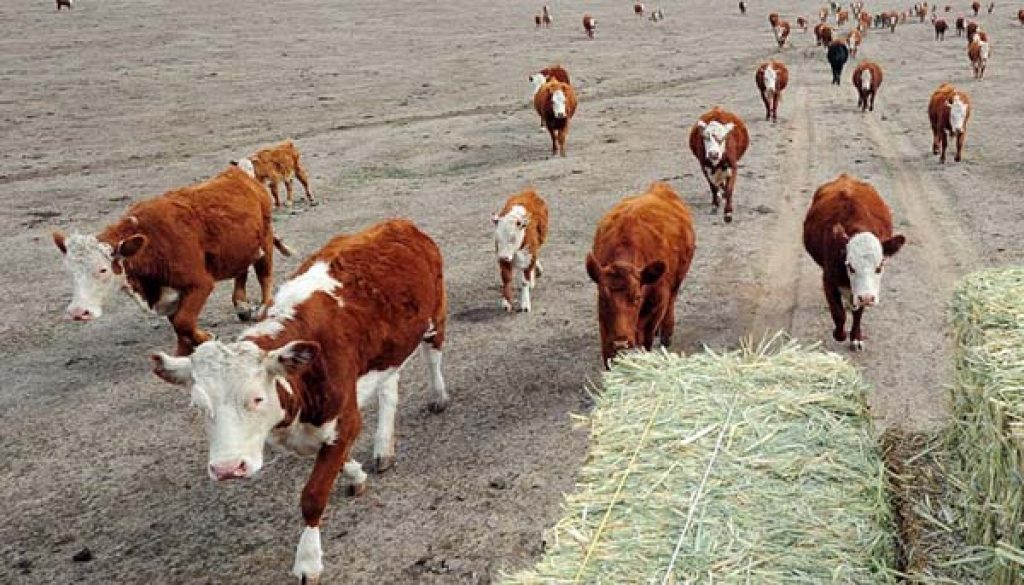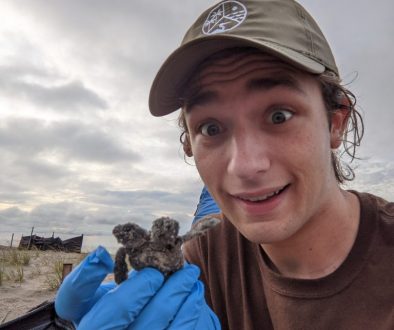Animal Agriculture’s effects on Climate Change
by Caroline Ross
As the population continues to grow, the collective impact of humans on this planet continues to carry a heavier weight every day. Many people think emissions from cars and transportation is the leading cause within climate change when animal agriculture is the number 1 factor. The UN’s Food & Agriculture Organization released a report titled “Livestock’s Long Shadow”. In this report Animal Agriculture is linked not only to Greenhouse Gas emissions but also to deforestation and biodiversity loss. Forests are cleared to grow crops that will eventually feed the livestock that we will then eat. 470 million hectares of arable land is dedicated to animal feed production. Emissions within feed production are racked up from this land-use change, the manufacturing and production of fertilizers used, and on-site fossil fuel use such as the machines used to cut the crops or process the meat and the planes used to spray the fertilizers. Carbon Dioxide is also released from the soil where the trees from the forests that are now gone, used to breathe in and turn into oxygen. This land-use change includes 2.4 million hectares a year, turning forests to pastures and .5 million hectares each year are turned from forests to feed crops. As these forests are turned into agriculture used lands, biodiversity is lost, resulting in livestock being one of the threats to 1,699 endangered species on The International Union for Conservation of Nature’s red list. Loss of biodiversity comes from deforestation, pollution, desertification and intense agriculture itself. Emissions released by livestock include nitrous oxide from plants and methane from animal manure and fermentation or gas release. Emissions also source from livestock processing, refrigeration and transportation. All together about 2.7 billion tons of CO2 is released, contributing to 9% of total anthropogenic CO2 emissions. Anthropogenic referring to environmental pollution or pollutants originating from human activity. Overall methane (CH4) emissions from Animal Agriculture account for 37% of the total anthropogenic CH4 emissions.
Along with these factors animal agriculture also uses massive amounts of our fresh water resources and pollute our streams and rivers at the same time, having a major effect on the water cycle while also creating dead zones in our oceans. Livestock accounts for 8% of all water use and 90% of that water is used in feed production for the livestock to consume. Pollution is substantial at feed production, animal production and processing levels including nutrients, organic matter, antibiotics and pesticides. All having major impacts on the water cycle pertaining to pollution.
The increase in animal agriculture over the years is due to population rise and increased urbanization. Animal Agriculture used to be family farms with land for the animals to grow and graze in. Buying your meat used to be from the people who raised those animals on a farm, like we see today in farm to table restaurants, a resurgence in caring how your food got to your plate, local and naturally grown. Have you ever thought about the path your food takes before you buy it in a store and take it home to eat? Today that piece of meat was manufactured in a factory farm. Eating meat has become normal behavior in every meal, and the 5 major agribusinesses that run this industry turned farms into factories to produce huge amounts of cheap meat at an astonishing rate. These 5 controlling companies include Tyson, JBS, Cargill, Smithfield, and Perdue.
There are both pros and cons when talking about Factory farming. One major pro is how cheaply meat and dairy products can now be produced and processed. Factory farms also turn out a huge profit. When treatment and proper care of animals has been allowed to be overlooked, the cost of raising animals is reduced. The locations that these factories are built in also provide the factories with cheap labor, many slaughter houses are operated by undocumented workers who will work for the bare minimum and cannot form unions, so they must work for what they are offered because a job is a job after all. Factory farming also creates lots of jobs and opportunities to people who need work, the factories are huge operations and therefore need a lot of employees to run smoothly and operate in a timely manner. Factory farms offer a wide variety of jobs and provide economic stimulation to areas in the world that would otherwise be hurting.
The cons of factory farming start with animal cruelty. The animals within factory farming live in cruel conditions and are victims to very sad lives. Many don’t ever see the sunlight until they are being transported to the slaughter houses. Factory farms pack animals such as chickens, cows, turkeys, and pigs into incredibly small areas and are then fed additives to fatten them up. They are also forced to wade through their own feces and other dead animals that didn’t make it. This is the only life they know until they are killed to be processed. They are never given a chance to live as animals, they are pieces of meat and profit right when they are born. The health and wellbeing of us consumers should be looked at too. There are many health concerns including disease and illness within these animals due to their living conditions. This translates into contaminated and dangerous meat. There are major recalls that happen all over our country from cases of people falling sick or even dying from eating beef or a burger and then contracting E. coli. Meat has become so hazardous that the FDA has raised the temperature at which the inside of a burger should be cooked to from 140F to 155F, a 15F increase due to health concerns and risks if undercooked. Burning off the diseases that are in our food to make them consumable. Factory farms also have nearly wiped out farming communities in the U.S due to factory farm operations that can produce products so much more quickly and cheaper than traditional farming, making factory farming the obvious choice for business and large-scale companies. I have already mentioned extensively the degradation of the environment factory farms have and continue to impact our climate and its change. Due to the immense overcrowding these factory farms cannot handle the amount of waste that the animals produce and create manure lagoons that attribute to land, water, and air pollution in the surrounding areas.
Policy intervention is needed to balance livestock in the ecosystem. This calls for intensification of production without the concentration. Moving the animals back into grassy fields and pastures, adapting back to a grazing system which in turn would reduce animal cruelty and disease that are both major components in today’s animal agriculture productions. Adapting more sustainable practices will mitigate the major impacts the animal agriculture industry is contributing to climate change today. Just improving the diets and adding balanced feed would reduce methane emissions and lower the nitrogen content produced. Some options include improved water use efficiency and enhanced waste management, both contributing to pollution reduction and water resource management. Land management would also play a key role in distributing the farms and returning these animals to the pastures to graze on grass, improving the livestock distribution and returning the animals to humane habitats. Since the release of the UN’s report, some stakeholders acknowledge industrial animal agriculture’s contribution to global climate change but for the most part the problematization of animal agriculture has not increased.




